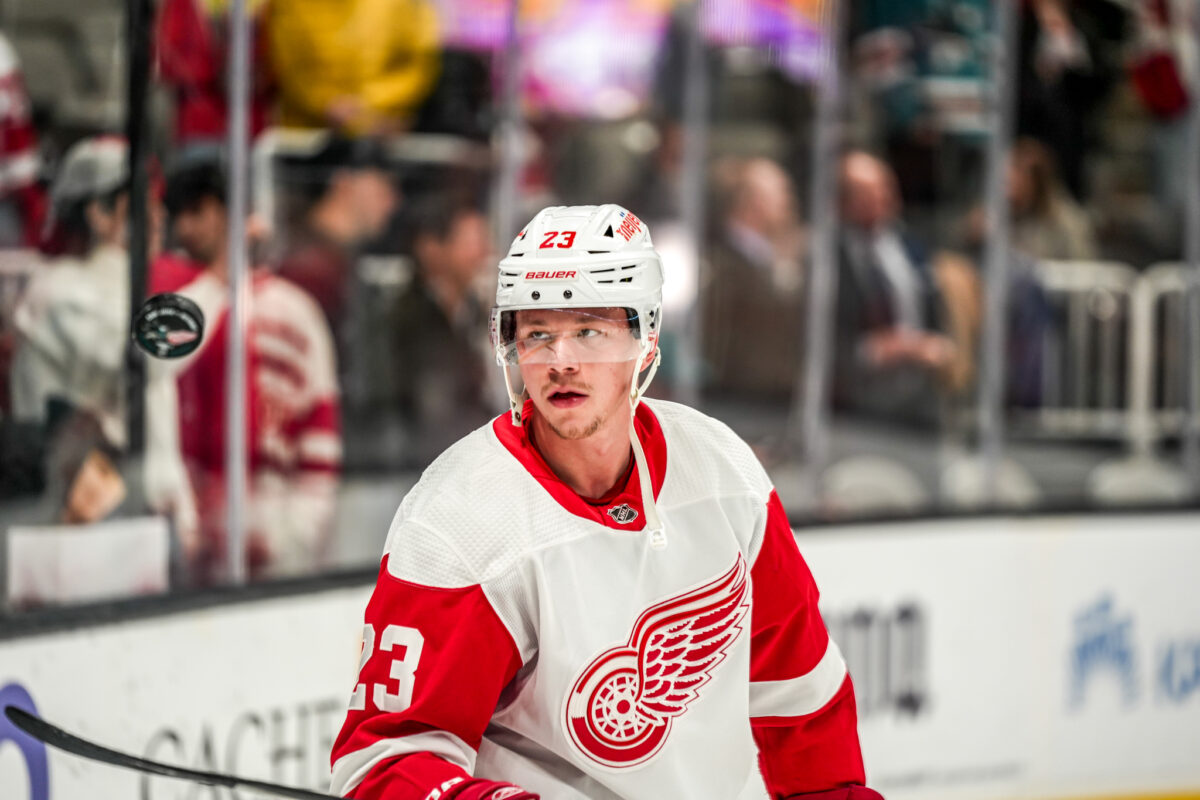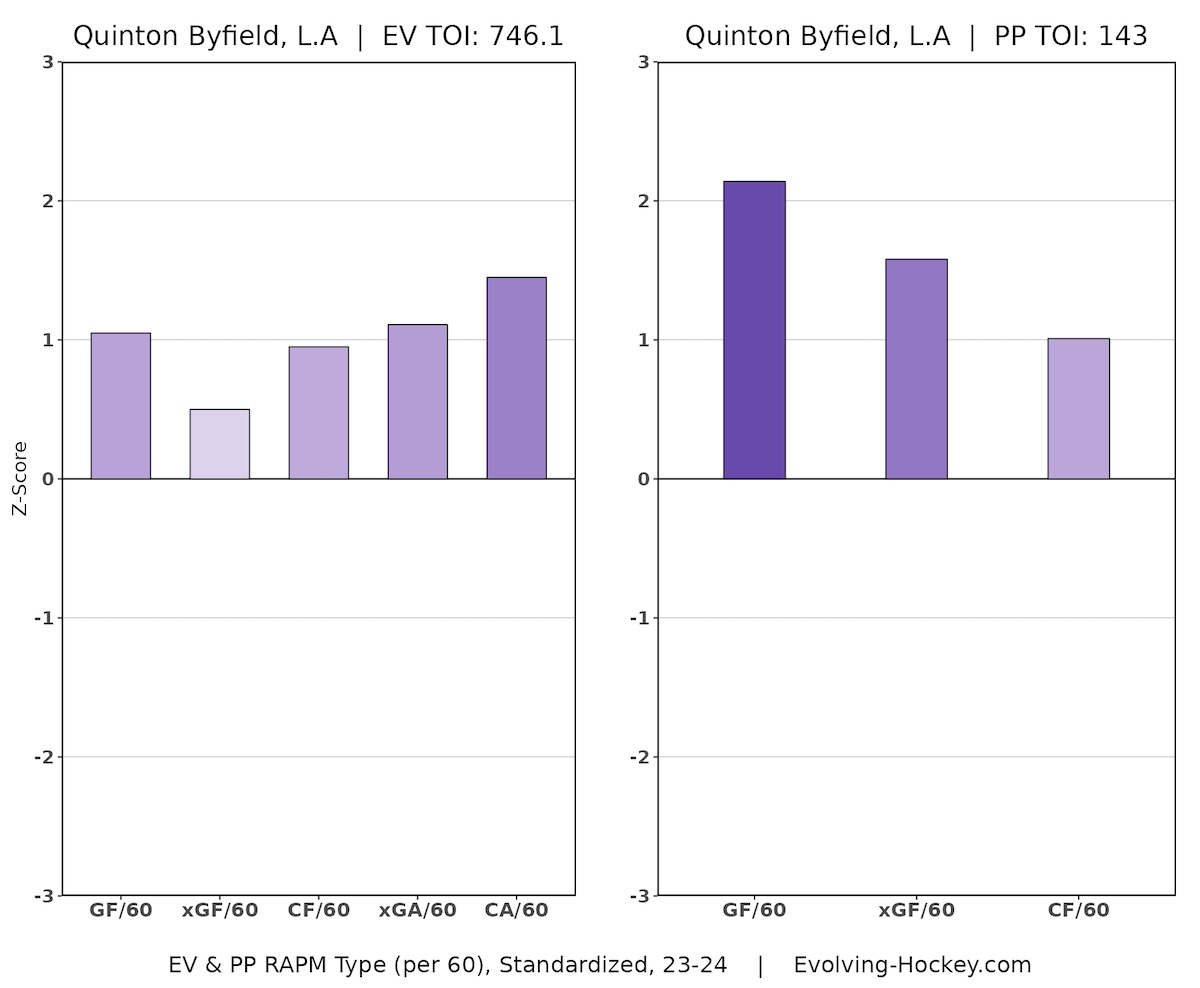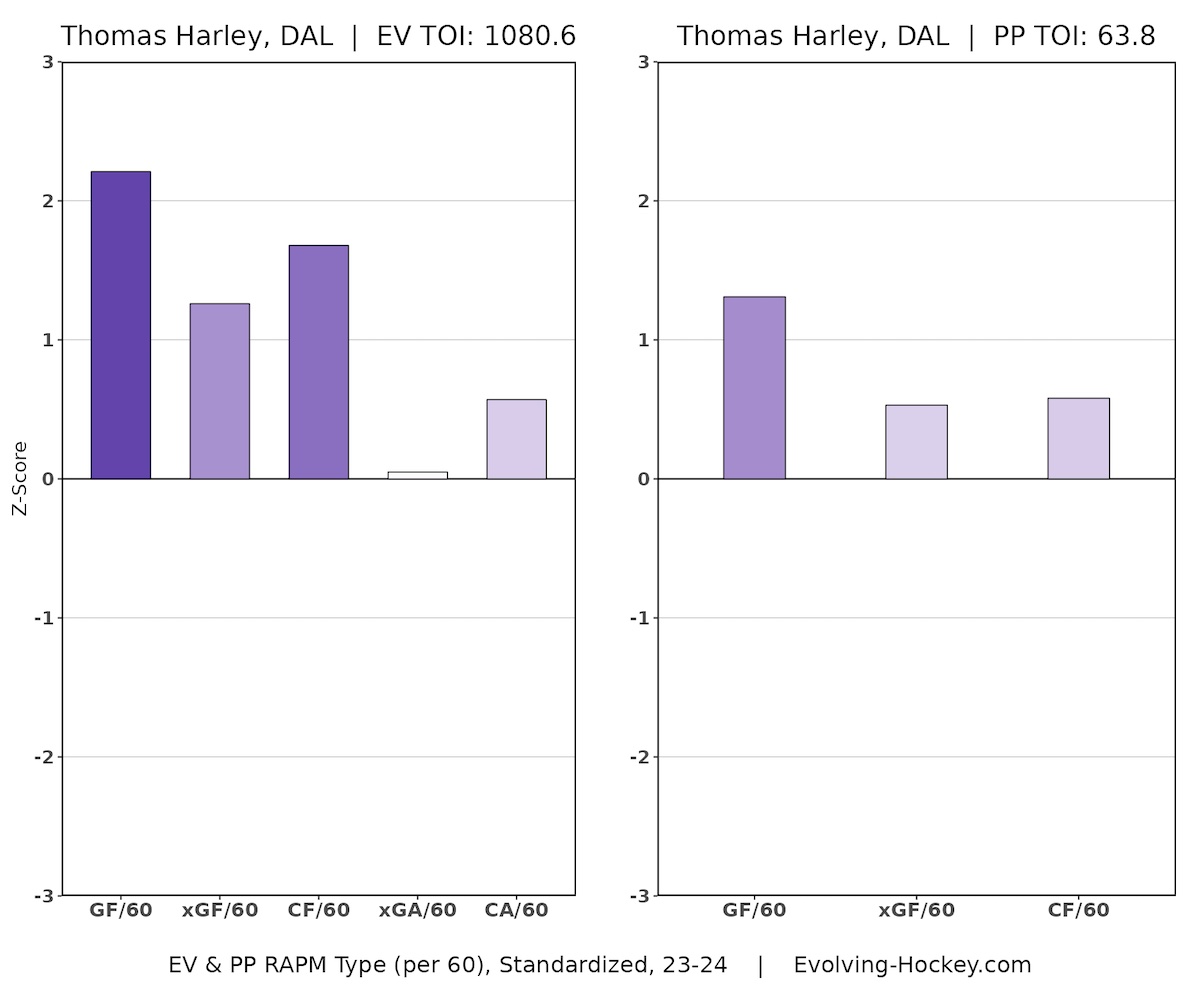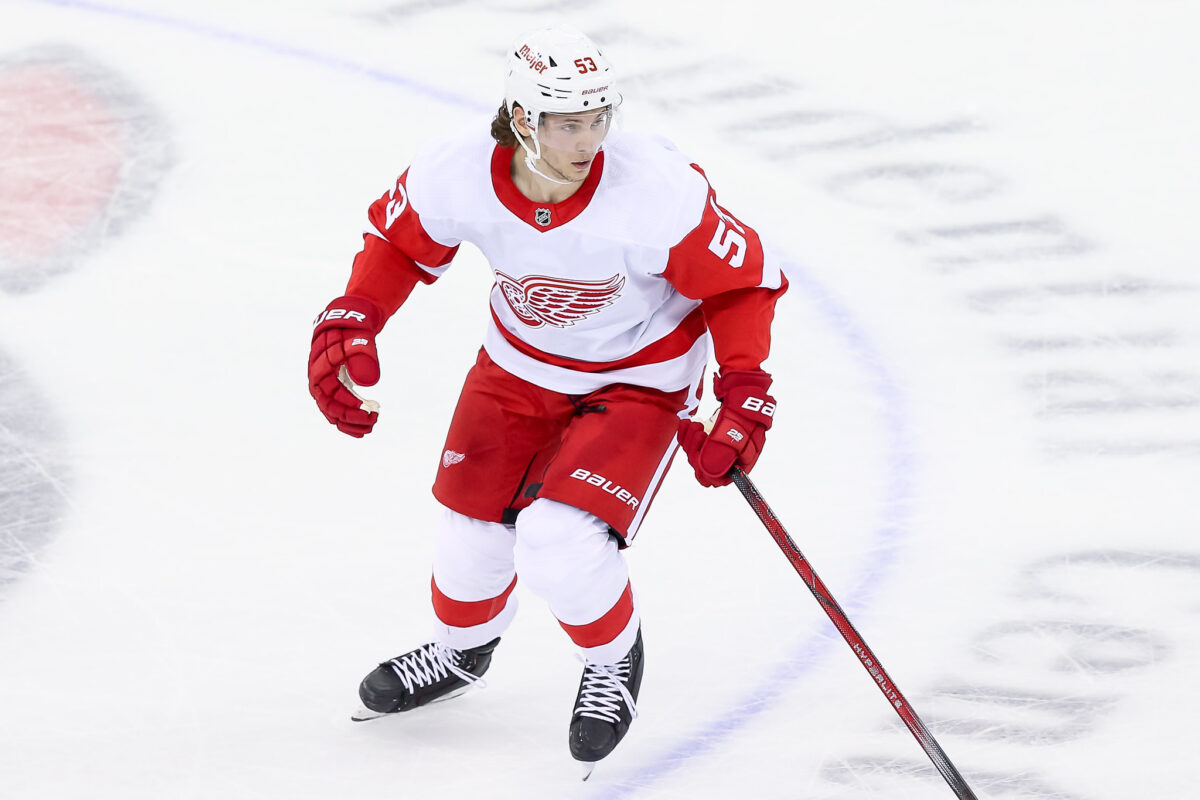Earlier this week, we looked at some of the top unrestricted free agents in the 2024 class and what their next contracts might look like come July 1. Today, it’s restricted free agents’ turn.
Lucas Raymond
Lucas Raymond went through the sophomore slump in 2022-23, but he’s rebounded this season and has become the star player the Detroit Red Wings envisioned when they used a top-ten pick on him at the 2020 draft. His next contract should be interesting in the ever-changing world of paying RFAs.
We’ve seen more teams abandoning bridge deals for their top young players coming off their entry-level contracts. If the Red Wings are wise, they’ll look to lock up Raymond long-term instead of bridging him. Knowing that, let’s try and find a comp or two to see what his next deal will look like.

The most recent comp for Raymond would be the eight-year extension the Montreal Canadiens signed Cole Caufield to that pays him $7.85 million annually. Caufield is much more of a goal-scorer than Raymond, but given their ages, it’s not a bad starting point, especially since that’s what Caufield got coming off his ELC.
Another comparable for Raymond could be Dylan Cozens, who signed for eight years at a cap hit of $7.1 million coming out of his ELC. Cozens was coming off a 31-goal, 68-point season before signing that extension with the Buffalo Sabres; Raymond is on pace for 71 points this season. Red Wings GM Steve Yzerman doesn’t love giving out term, but for the soon-to-be 22-year-old Raymond, betting on his upside and signing him for eight years should be the way to go. An eight-year deal worth around $7 million annually might end up being his next payday.
Casey Mittelstadt
The first few seasons of Casey Mittelstadt’s career did not go well, but he’s become a reliable playmaking center for the Sabres over the last two seasons. He finished with 59 points in 82 games a season ago and is on pace to total 62 this season. The Sabres have not been shy about paying their young talent (Cozens and Owen Power, to name a couple), and is Mittelstadt next?
One comparable for Mittelstadt is Dylan Strome and the five-year, $25 million deal he signed with the Washington Capitals. He was a 26-year-old RFA at the same time, making him one year older than Mittelstadt today. And his production is quite comparable to Mittelstadt.
Related: Predicting 9 UFA Contracts for 2024 Free Agency
Strome had totaled 113 points in his previous 150 games before signing that deal with the Capitals, a pace of 62 points per 82 games. Mittelstadt has 104 points across his last 142 games, which comes out to 60 points per 82 games. Will the Sabres want to pay him around $5 million a year? We shall see because that looks like the range they’ll have to go to if Strome is the proper comp.
Quinton Byfield
A bit similar to Mittelstadt, Quinton Byfield’s first couple of years in the NHL did not go well. But he’s broken out in a big way this season and has become one of the Los Angeles Kings’ best forwards. He has 18 goals and 46 points in 57 games, putting him on pace to finish with 26 goals and 66 points in 82 games.
Byfield is in a similar position to Raymond, as they’re both coming off their ELCs; both were in the 2020 draft, too. Byfield has less of a track record than Raymond, so the Kings might not want to go for a max-term deal with him yet. However, they would be wise to lock him up long-term before he breaks out further because this season may be just the start for him.
Is Byfield a $7 million player now? No, but you’re betting on the upside that he will be since he’s already producing at a 66-point pace as a 21-year-old. If his impacts look this strong moving forward, chances are he will live up to being a $7 million player at some point:

The Kings could bridge Byfield, but I think they’d be making a mistake if they did. Let’s say they pay him something like $5.75 million annually for three years, as the Anaheim Ducks did with Trevor Zegras, Byfield’s next contract could be quite costly in a few years. It’d be better to bet on his upside now and try and get a seven- or eight-year deal signed in a ballpark range of $6.5 to $7 million.
Seth Jarvis
The 2020 draft class is very much starting to take shape. In addition to Raymond and Byfield, Seth Jarvis could join his fellow draftmates in securing a payday. He has 19 goals and 48 points in 60 games this season, putting him on pace for 26 tallies and 66 points in 82 games.
Jarvis is a bit more comparable to Raymond, as both are nearing the completion of their third NHL season. The Carolina Hurricanes are one of the savviest organizations in the NHL, so I think they will try and lock up Jarvis long-term this offseason, even though they have to take care of Martin Necas, too (more on him in a bit).
Even though Raymond and Jarvis are good comparables, Raymond has been a bit more productive than Jarvis to this point. Raymond had 23 goals and 58 points in 82 games as a rookie in 2021-22, while Jarvis had 17 goals and 40 points in 68 games.
If the Hurricanes do decide to go long-term with Jarvis, I think he will come in at a lower cap hit than Raymond. One comparison could be the six-year, $30 million extension Joel Farabee signed with the Philadelphia Flyers in Sept. 2021. Farabee only had two years of production then, but the Flyers bet on his upside, and the deal has generally worked out for them.
Even then, I think Jarvis’ cap hit will come in higher than Farabee’s, given he’s producing at a 66-point pace this season, something Farabee didn’t have as leverage when he signed that extension. It wouldn’t surprise me if Jarvis’ next contract looked like something close to six years for $6 million annually.
Thomas Harley
Death, taxes, and a Dallas Stars draft pick emerging as a star player. The 18th overall pick in the 2019 draft, Thomas Harley has had a breakout season, with 14 goals and 35 points in 59 games. He’s played top-pair minutes alongside Miro Heiskanen for much of the season and has handled it quite well.
We’ve seen teams go big on RFA defensemen coming out of their ELCs. The Sabres gave Power a seven-year extension worth north of $7 million a year, while the Ottawa Senators signed Jake Sanderson for eight years at a cap hit just north of $8 million per year. Some teams have also bridged defensemen, like the Edmonton Oilers with Evan Bouchard and the New York Rangers with K’Andre Miller.
Because this is the first year Harley has produced in the NHL, it wouldn’t surprise me if the Stars decided to bridge him to see if he can repeat it. He is shooting 12.6 percent, a high number for a defenseman. Still, his underlying numbers have been fantastic and suggest his performance is legit, even if his shooting percentage might be unsustainable for a blueliner:

Miller signed for two years at a cap hit of $3.872 million with the Rangers. Bouchard signed for two years at a cap hit of $3.9 million with the Oilers. Both players signed bridge deals because their teams were tight on the cap, but I could see the Stars taking a similar path since Harley has only had one productive season. My guess is he signs a similar two-year bridge deal between $3.5 to $4 million with the Stars.
Martin Necas
The Hurricanes will sign Jarvis, but they’re in an interesting spot with Necas. After recording 71 points a season ago, he’s backed it up in 2023-24, with 18 goals and 42 points in 55 games, a 27-goal, 62-point pace over 82 games.
Necas signed a bridge deal on his last contract, so that won’t happen this time. It might not end up being an eight-year deal this summer, but he should still get some term. One comparable for Necas could be the seven-year, $49 million extension Troy Terry signed with the Anaheim Ducks this past offseason.
Terry had totaled 128 points in his previous 145 games before signing that contract. As of this writing, Necas has 113 points in his last 137 games. If he finishes with 62 points this season, that’ll bring him to 133 in 157 contests, which is close to Terry’s production.
It’s a good bet that Necas’ next cap hit comes close to having it start with a seven. The Hurricanes have just over $31 million in cap space to work with this summer, but they have plenty of roster spaces to fill out. Jarvis and Jack Drury are among their RFAs, while Brady Skjei, Brett Pesce and Teuvo Teravainen are among their UFAs. They’ll have some tough decisions to make, and Necas may be one of them.
Moritz Seider
Another big-name RFA for the Red Wings to sign this summer, Moritz Seider is likely heading for a long-term extension. He’s an interesting case to me. He had a great rookie since. But since then, he’s stagnated offensively, and his defensive impacts are not great. At the same time, he’s had some extreme usage in the defensive zone, which probably has impacted his defensive results.

Still, I don’t think Yzerman will hesitate to give him an eight-year extension. How much that will cost is a bit tough to decipher, though. If I had to guess, his next contract should look something close to Sanderson’s, which has a cap hit of $8.05 million for the next eight years.
It also wouldn’t surprise me if his cap hit came in even a little further north of what the Sabres paid Power, which is $8.35 million annually. While I’m not sure it’s true, I think there’s a perception around the league that Seider is better than Power. And I would think the Red Wings believe that themselves. Based on Sanderson and Power, Seider could sign for seven to eight years between $8 to $8.5 million annually.
Filip Hronek
Last but not least, there’s Filip Hronek, who’s having a career year playing alongside Quinn Hughes. Frank Seravalli has reiterated for months that he believes Hronek’s next contract will have a cap hit that begins with an eight. But is he worth that kind of money?
Hronek is having a career season and is on pace to finish with 58 points, which would shatter a career-high. That is a bit of a red flag, though. One reason he’s been cashing in is because he has an on-ice shooting percentage of 13.97 percent, meaning the Canucks are scoring on nearly 14 percent of the shots he’s on the ice for. That would also shatter a career-high, so that screams regression.
I think Hronek is a good defenseman. Would I pay him $8 million annually? I would not. Vince Dunn’s four-year extension with the Seattle Kraken, which has a cap hit of $7.35 million, could be a comparable. But even then, I think that’s a bit expensive for Hronek. The Canucks should at least explore selling high on him, but he is a good fit with Hughes. That’s probably a good reason to extend him, but they will have to find a way to keep his cap hit down, especially after another recent RFA signing.
Pettersson Already Receives His Payday
Elias Pettersson was part of this group, but he signed an eight-year extension at a cap hit of $11.6 million with the Canucks yesterday. The two comparisons I had for him were David Pastrnak (8 years, $11.25 million per) and William Nylander (8 years, $11.5 million). I thought he’d sign for a little less than he did, but still, not too far off.
These aren’t the only intriguing RFAs in this class, either. Others include Dawson Mercer, Kirill Marchenko, Sean Durzi and Jeremy Swayman. Swayman is particularly interesting, given he went to arbitration last offseason. Goalie contracts are difficult to predict, and I’d be lying if I said I could give a good prediction of what the Boston Bruins pay him. But he should get a nice bump.
By the looks of it, there could be some big money handed out by GMs to RFAs this summer. Most will sign with their current teams, but don’t be surprised if some move in trades, too.
* * *
Contract info from CapFriendly
